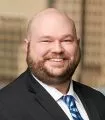Q&A with Arnold & Porter PTAB Practitioner Abigail Struthers
Abby began her legal career at the firm (then Kaye Scholer) as a summer associate. In 2020, she was recruited in-house to serve as Senior IP Litigation Counsel for client Sandoz Inc. Abby rejoined the firm as a partner in our NY office in April of 2022.
How would you describe your practice?
I represent life sciences clients in patent disputes, both in federal court and before the PTAB. I have spent most of my career working in the pharmaceutical space, first on brand vs. generic small molecule litigation, then increasingly (over the last decade) on disputes related to biologic drug products. While at the firm, most of my clients have been innovator companies. My time at Sandoz gave me the opportunity to run litigation strategy from the generic side.
How long have you been practicing in front of the USPTO and in front of the PTAB?
My first experience in front of the PTAB was in 2017, when I represented our client as petitioner, filing eight IPR challenges to patents covering a blockbuster biologic drug. Since then, I have represented both petitioners and patent owners in connection with PTAB proceedings.
Why were you interested in practicing before the PTAB, and how did you get involved in the practice?
As biologic (and biosimilar) drugs increasingly began to dominate the therapeutics market, it became evident that PTAB practice would be an important part of the overall strategic picture for our clients. Biologic drug products are hugely valuable and are typically protected by multiple patent families. As a result, biosimilar and innovator companies are often in adversarial proceedings at the PTAB years before related litigation sees the inside of a courtroom. I saw PTAB practice as a way to "get in at the ground floor" in partnering with our clients on their most important products.
How would you like to grow your practice before the PTAB?
I am focused on growing our business in biologic v. biosimilar (BPCIA) litigation. As noted, PTAB proceedings often precede BPCIA litigation, and I think our clients recognize the value of getting us involved at the PTAB stage so that we can formulate and implement a cohesive patent defense strategy from the beginning.
What are the major differences between working in-house and at a law firm?
I'm sure this varies from company-to-company, and role-to-role, but for me the biggest difference was one of "breadth" vs. "depth." First, the scope of my responsibilities at Sandoz forced me to level up-I learned quickly that I had to focus on the strategic big picture and trust my outside counsel to the more granular details of implementing it. Second, even though I was hired as a patent litigator, I regularly received cold-call requests for legal advice having little or nothing to do with my primary areas of expertise. My time in-house was really valuable for a lot of reasons, not least because it required me to think holistically to get to the best business result.
What do you enjoy about practicing at Arnold & Porter?
At the risk of sounding cliché, our people are what make this firm a great place to practice. It's a privilege to have the ability to collaborate with so many smart people, who have such a wealth of legal talent. Just as important is that our colleagues are people with whom I actually enjoy spending time.
What do you like to do in your spare time?
My favorite leisure activities include traveling with my family (husband and 12-year-old daughter), hiking, cooking, and reading fiction.
Q&A with Arnold & Porter PTAB Practitioner John Sabacinski
John joined Arnold & Porter in March 2022 as an associate. Prior to working at Arnold & Porter, John worked at an IP boutique and later a larger firm in Chicago.
How would you describe your practice?
My practice focuses on a wide range of patent matters, covering topics from life sciences to electrical equipment. I spend most of my time on district court litigation and inter partes review matters before the PTAB. I have assisted with some patent prosecution, helping draft claims and respond to Office Actions..
How long have you been practicing in front of the USPTO and in front of the PTAB?
I have been practicing for two years, with the main focus being on inter partes reviews.
Why were you interested in practicing before the PTAB, and how did you get involved in the practice?
I wanted to try something new. I had only worked on district court litigation before and wanted to see the differences between district court litigation and inter partes reviews firsthand. The fast pace allows for an increased rate of gaining experience and growth, which is great being a newer associate.
How would you like to grow your practice before the PTAB?
I would like to continue to gain experience and expand my role in front of the PTAB. Right now, my main focus is to learn more about the processes and procedures to better contribute to whatever team I work with.
What do you enjoy about practicing at Arnold & Porter?
I really like the environment. Arnold & Porter gives you the opportunity to work with great legal minds on exciting cases with big-name clients. So many people are willing to help you and train you to become a better lawyer as long as you are willing to reach out and put in the effort.
What do you like to do in your spare time?
In my spare time, I like to home brew and grow hot peppers and use them for cooking and making hot sauce.
Sanctions for Abuse of IPR Process: Letter From Director Vidal and Precedential Director Review Decision OpenSky Indus., LLC v. VLSI Tech. LLC, IPR2021-01064, Paper No. 102 (PTAB Oct. 4, 2022)
Letter from Director Vidal: On September 21, 2022, Director Vidal delivered a letter to Senators Hirono and Tillis, discussing sanctions that USPTO may impose on parties for misconduct or abuse of the IPR process. The letter explains that the eight sanctions expressly enumerated in USPTO Rule 42.12 are non-limiting, and that the PTAB has the discretion to issue additional sanctions, which "should bear a reasonable relationship to the severity of the violation." The letter further summarizes statistics relating to sanctions at the PTAB. Since the start of America Invents Act (AIA) proceedings, the PTAB has addressed sanctions in at least 59 AIA cases, 44 of which stemmed from an alleged failure to comply with a rule or order, and 15 of which stemmed from an alleged abuse of process. The PTAB imposed sanctions in 31 out of the 59 cases.
Precedential Director Review Decision: On October 4, 2022, Director Vidal issued a decision imposing sanctions in OpenSky Indus., LLC v. VLSI Tech. LLC, after determining that OpenSky "engaged in discovery misconduct by failing to comply with [her] Order for interrogatories and mandated Discovery." Director Vidal further determined that OpenSky "abused the IPR process by filing this IPR in an attempt to extract payment from VLSI and joined petitioner Intel, and expressed a willingness to abuse the process in order to extract the payment." The Director's decision precluded OpenSky from actively participating in the IPR proceeding, and ordered OpenSky "to show cause as to why it should not be ordered to pay compensatory damages to VLSI, including attorney fees." The decision further remanded the matter to the Board to determine whether the petition and the record prior to institution "presents a compelling, meritorious challenge."
Pursuant to the Director's Order, on October 14, 2022, the Board issued a decision on remand assessing the merits at institution (Paper No. 107). Based on a review of the record prior to institution, the Board concluded that the Petition "presents a compelling, meritorious challenge." On October 17, 2022, Director Vidal issued an Order (Paper No. 108) for sua sponte Director Review of the Board's compelling merits decision.
Recent PTAB Case Regarding Pre-Institution Settlement: Texas Instruments Inc. v. Sonrai Memory Ltd., IPR2022-00801, Paper No. 8 (PTAB Sep. 22, 2022)
In Texas Instruments Inc. v. Sonrai Memory Ltd., the Board denied without prejudice a joint motion to dismiss an IPR proceeding pre-institution because the parties had not filed the relevant settlement agreement with the Board. In particular, the Board pointed to 37 CFR § 42.74(b) as requiring the filing of settlement agreements "between the parties made in connection with, or in contemplation of, the termination of a proceeding," regardless of whether a trial has been instituted. The Board highlighted that such a filing serves to "address[] potential anticompetitive behavior." The Board's order authorized the parties to file a renewed joint motion to dismiss the Petition, along with the settlement agreement, and to file a request to treat the settlement agreement as business confidential information "to be kept separate from the patent file, as specified in 37 CFR § 42.74(c)." The parties complied with the Board's instructions and the Board granted the renewed motion to dismiss on Oct. 7, 2022.
Federal Circuit overturns Board decision that violates the APA: Provisur Techs., Inc. v. Weber, Inc., 2021-1942 (Fed. Cir. 2022)
In Provisur Techs., Inc. v. Weber, Inc., the Federal Circuit vacated and remanded the Board's finding of unpatentability in an IPR for not fully and particularly setting out the bases upon which it reached its decision, in violation of the Administrative Procedure Act (APA). A panel of the Federal Circuit found that the Board erred in failing to adequately address the parties' arguments relating to "surface-area" limitations of the challenged claims. Consequently, the Federal Circuit vacated the Board's decision and remanded the case for reconsideration.
Board Institutes IPR Over Fintiv Challenge, Citing Compelling Unpatentability Arguments: Nokia of America Corp. v. TQ Delta, LLC, IPR2022-00664, Paper 10 (PTAB Sept. 27, 2022)
In Nokia of America Corp. v. TQ Delta, LLC, the Board addressed issues of real party in interest and privity, as well as a challenge to IPR institution under Fintiv.
Real Parties in Interest (RPI) and Privity: The Board first addressed the issues of real party in interest and privity between Petitioner and a second, time-barred entity. The Board focused on the fact that Petitioner had been the target of patent enforcement efforts by Patent Owner and concluded that Petitioner filed the petition for itself, not on behalf of another real party in interest.
The Board then addressed the issue of privity between Petitioner and the time-barred entity, and rejected Patent Owner's argument that the business partnership between the parties gave rise to privity.
Fintiv: The Board also declined to deny institution of the IPR under Fintiv, citing the Director's June 21, 2022 USPTO Memorandum on Interim Procedure for Discretionary Denials in AIA Post-Grant Proceedings with Parallel District Court Litigation, after finding that Petitioner presented a compelling patentability challenge.
PTAB Extends Motion to Amend Pilot Program
On September 30, 2022, the PTAB issued a bulletin announcing the extension of its Motion to Amend (MTA) pilot program until at least September 16, 2024. A notice from USPTO to the same effect appeared in the Federal Register on October 4.
Patent owners in an AIA trial proceeding have the right to file an MTA. The MTA pilot program, initiated in 2019, provides a patent owner who files an MTA with options to request preliminary guidance from the PTAB on the MTA and to file a revised MTA based on this guidance and/or after receiving a petitioner's opposition to the original MTA. In the most recent update to its ongoing MTA Study, USPTO reports that, since the inception of the pilot program, patent owners sought to amend claims in 10% of all AIA trials. The Board granted (in whole or in part) 25% of pilot MTAs compared to 14% of pre-pilot MTAs.
Open for Comments: USPTO Initiatives to Ensure Robustness and Reliability of Patent Rights
On October 4, 2022, USPTO issued a request for comments (RFC) from the public and interested stakeholders on numerous initiatives aimed at "bolstering the robustness and reliability of patents." USPTO also seeks comments on questions raised by six United States Senators in a June 6, 2022 letter to USPTO. Comments are open until January 3, 2023.
The RFC poses eleven questions on which it seeks comment (see Section IV. Questions for Public Comment at the end of the RFC). The questions are generally categorized into two groups. First, the RFC poses a group of five questions (questions 1-5) addressing USPTO initiatives responsive to President Biden's July 9, 2021 Executive Order "Promoting Competition in the American Economy," and a September 10, 2021 letter from FDA, both encouraging engagement between FDA and USPTO to ensure that the patent system properly and adequately protects innovation while not unnecessarily delaying generic and biosimilar competition. The second group (questions 6-11) are questions reproduced from a June 8, 2022 letter from six United States Senators to USPTO, and are intended to address the Senators' concerns about "patent thickets" and their effect on competition. The Senators' questions propose changes to the use of terminal disclaimers and continuation practice, as well as adjustments to USPTO's fee structures.
Open for Comments: USPTO Considering Expanding Practitioner Admission Criteria
In an RFC notice posted on October 18, 2022, USPTO announced that it is considering modifying the criteria for practitioner admission in certain technology areas. The notice seeks comments on questions related to admissions requirements to practice before the USPTO, including whether USPTO should implement a design patent practitioner bar separate from the utility patent practitioner bar and whether the office should make certain modifications to its procedures for designating credentials which are accepted as proof of technical competence to practice before the USPTO. Comments are open until January 17, 2023.
The content of this article is intended to provide a general guide to the subject matter. Specialist advice should be sought about your specific circumstances.







